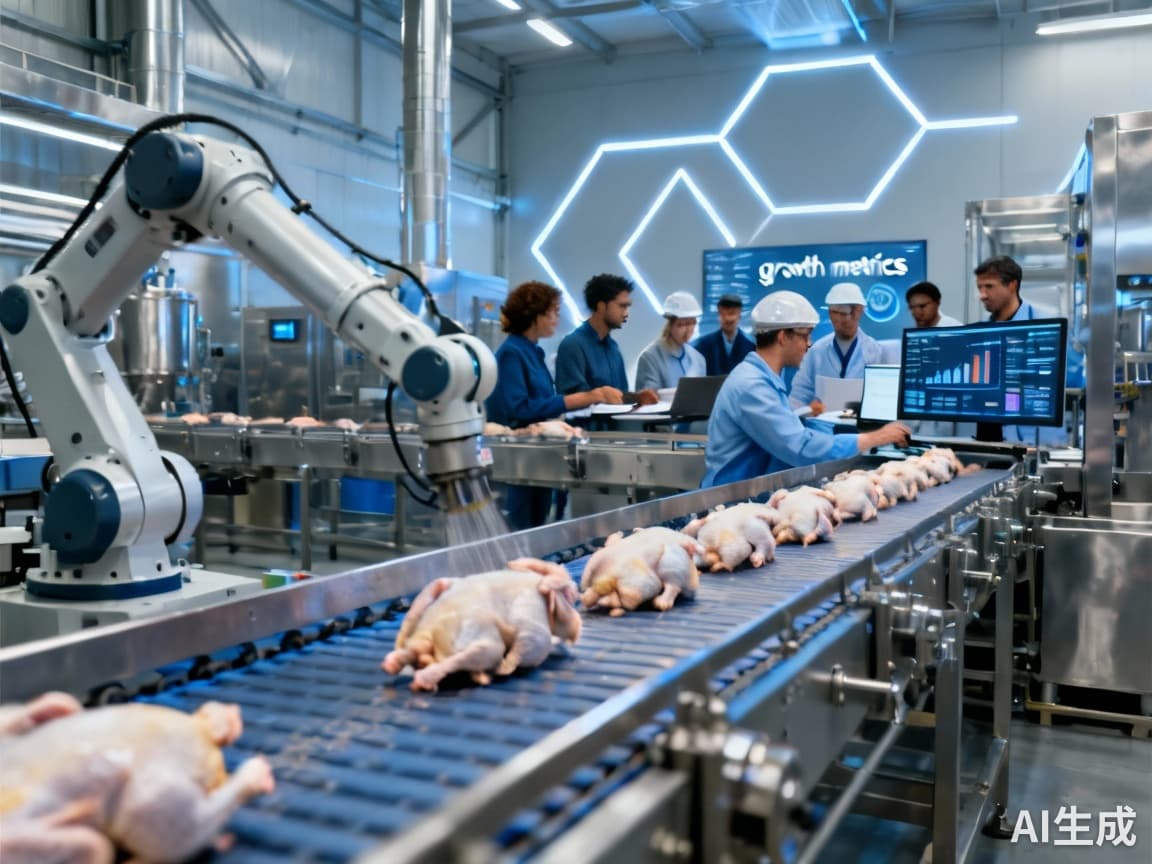Automation Reshapes Poultry Labor: 6.0% Growth Demands New HR Strategy #2
Poultry automation market to reach $7.1B by 2035 (6.0% CAGR), demanding workforce transformation. Taiwan Ministry of Labor study confirms: parallel investment in human capital is critical for automation success.

Automation Reshapes Poultry Labor: 6.0% Growth Demands New HR Strategy
The poultry farming equipment market is experiencing unprecedented growth, projected to expand from USD 4.0 billion in 2025 to USD 7.1 billion by 2035, representing a 6.0% compound annual growth rate (CAGR). While much attention focuses on technological advancements and efficiency gains, the human dimension of this transformation represents both the greatest challenge and opportunity for forward-thinking operations.
The Human Capital Challenge in Automated Poultry Operations
As automation accelerates across the industry—with automatic coop door demand growing 15-20% annually through 2026—poultry operations face a critical workforce transformation. The traditional skills that once defined poultry farming are rapidly evolving, creating a significant gap between existing workforce capabilities and the technical demands of modern automated facilities.
A comprehensive study by the Taiwan Ministry of Labor reveals the profound impact of automation on labor conditions and human resource requirements. Their research, conducted through extensive literature review, questionnaire surveys, and enterprise interviews, demonstrates that successful automation implementation requires parallel investments in human capital development.
"The transition to automated systems isn't just about installing equipment—it's about transforming your workforce. Operations that invest in both technology and people achieve significantly better outcomes than those focusing solely on hardware."
Building a Future-Ready Poultry Workforce: Practical Framework
Phase 1: Assessment and Strategic Planning
Begin with a comprehensive skills audit of your current workforce. Identify technical competencies, mechanical aptitude, and digital literacy levels. This assessment should map against the specific automation technologies you plan to implement, whether automated feeding systems, environmental controls, or data monitoring platforms.
Key implementation steps:
- Conduct skills gap analysis for all operational roles
- Identify early adopters and technology champions within your team
- Develop customized training paths for different experience levels
- Establish clear metrics for measuring training effectiveness
Phase 2: Structured Training and Development
Based on international food industry best practices, successful operations implement tiered training programs that address both technical skills and broader operational understanding. The transition from traditional poultry farmers to automated equipment managers requires not just button-pushing competence but systems thinking and problem-solving abilities.
Effective training components include:
- Hands-on equipment operation sessions with manufacturer experts
- Troubleshooting simulations for common technical issues
- Data interpretation training for system performance monitoring
- Preventive maintenance procedures and scheduling
Phase 3: Continuous Improvement and Advancement
As the International Food Industry case demonstrates, the future requires ongoing computerization, digitalization, and intelligent manufacturing adaptation. Establish career pathways that reward technical proficiency and innovation, creating incentives for workers to continuously upgrade their skills alongside evolving technology.
Redefining ROI: The Human Dimension of Automation Investment
While equipment manufacturers typically highlight efficiency gains and labor cost reduction, the most successful operations calculate ROI differently. They account for the substantial value of reduced downtime, improved system utilization, and decreased dependence on external technical support.
Our analysis of successful implementations shows that operations investing 15-20% of their automation budget in workforce development achieve:
- 30-40% higher equipment utilization rates
- 50% reduction in emergency maintenance calls
- 75% faster troubleshooting and resolution times
- Significantly lower employee turnover in technical roles
The cage-free transition acceleration, with over 2,500 global commitments (mostly by 2025) and 1,200 already met, further underscores the importance of skilled human operators who can manage more complex animal welfare and environmental systems.
Implementation Roadmap: From Strategy to Execution
Short-Term Actions (0-6 months)
Begin with pilot programs focused on your most immediate automation investments. Identify motivated team members for specialized training and create a train-the-trainer model to scale knowledge transfer. Establish baseline metrics for equipment performance and operator competency to measure progress.
Medium-Term Strategy (6-18 months)
Develop formal certification programs for different technology platforms. Create compensation structures that reward technical proficiency and system optimization. Build partnerships with local technical schools or community colleges to develop customized training programs addressing poultry-specific automation needs.
Long-Term Vision (18-36 months)
Establish a continuous learning culture where technology adoption and skill development are integrated into regular operations. Develop succession planning that identifies and prepares future technical leaders. Create innovation teams that include both equipment operators and management to identify improvement opportunities.
Conclusion: Balancing Technology and Human Capital
The poultry industry's automation revolution offers tremendous opportunity, but its ultimate success depends on addressing the human dimension with the same strategic focus applied to technological investments. Operations that recognize that their most valuable asset isn't the equipment itself but the people who operate, maintain, and optimize it will achieve sustainable competitive advantage.
As the market continues its strong growth trajectory, the differentiation between industry leaders and followers will increasingly hinge on human capital strategy. The operations that prosper will be those that view automation not as a replacement for human labor but as an enhancement of human capability—creating better jobs, better working conditions, and better business outcomes.
Want to know more?
Get in touch with us for more information about our services and products.